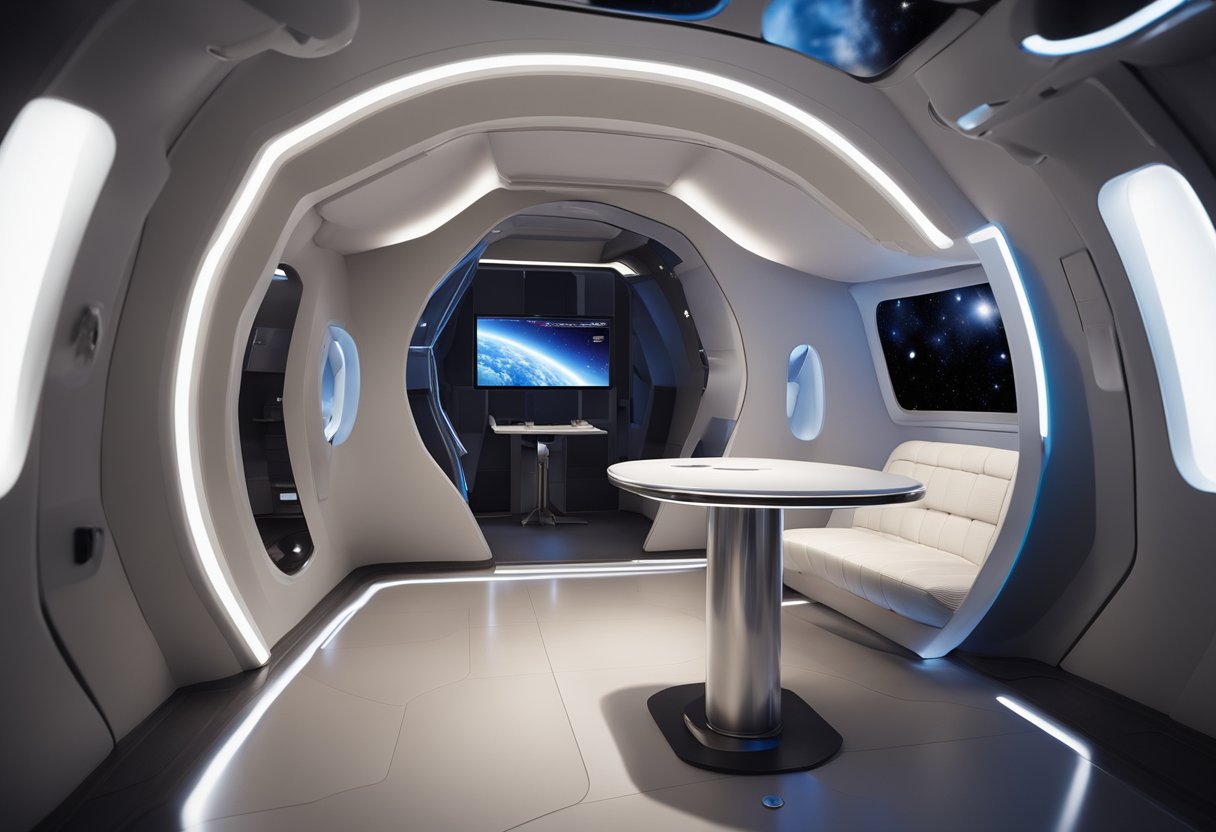
Space Capsule – Space travel, once a field exclusive to highly trained astronauts, has entered a new era where comfort is becoming as pivotal as technical functionality. As commercial space companies develop capsules capable of carrying not just astronauts but also space tourists, significant strides have been made to enhance the comfort of these compact vehicles. We recognise that prolonged periods in a constrained environment can be challenging, and improvements are focusing on ensuring that passengers can endure the journey with ease.
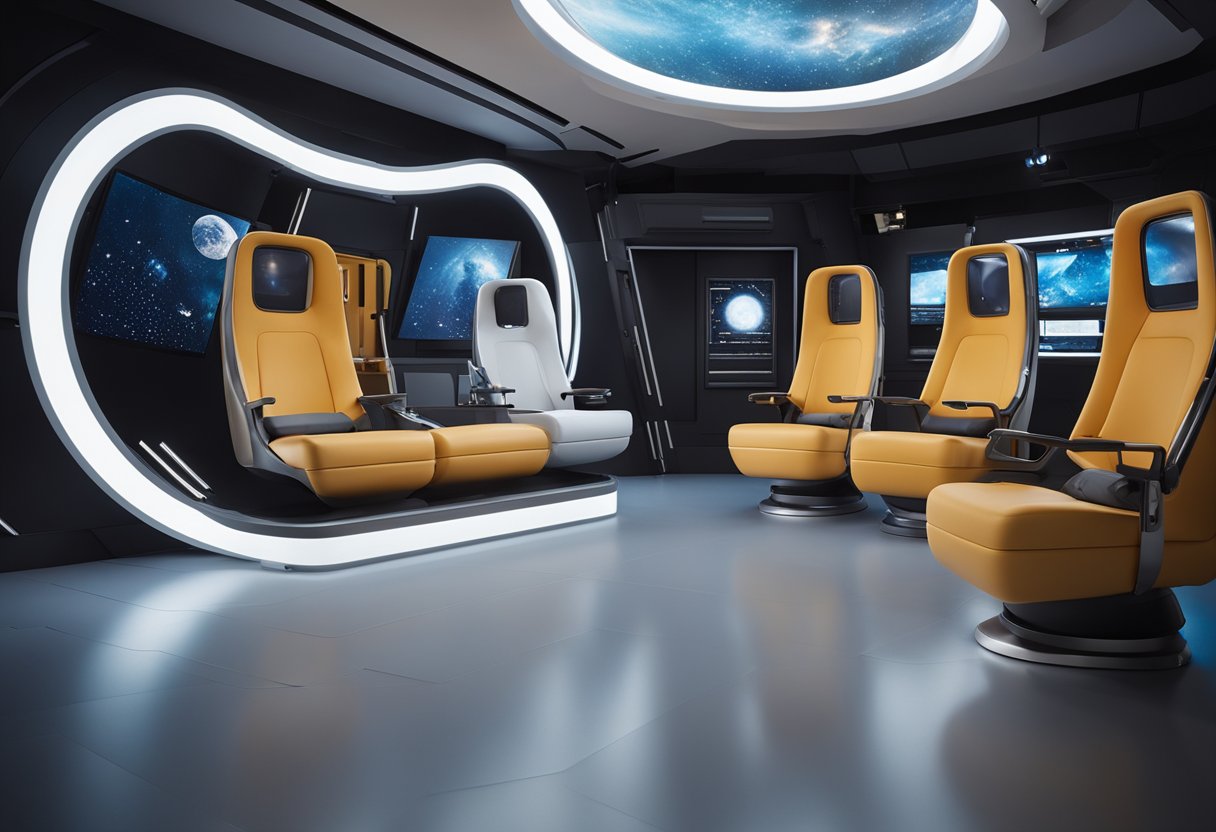
Our collective adventure into space has spurred on a multitude of technological advances in capsule design, making past space voyages seem antiquated in comparison. Improvements in the seats alone have come a long way from the mere functionality of earlier missions, integrating ergonomic advancements and materials that alleviate the discomfort of G-forces experienced during launch and re-entry. Furthermore, environmental controls have been refined to regulate air quality and temperature, essential for creating a habitable space while travelling outside Earth’s atmosphere.
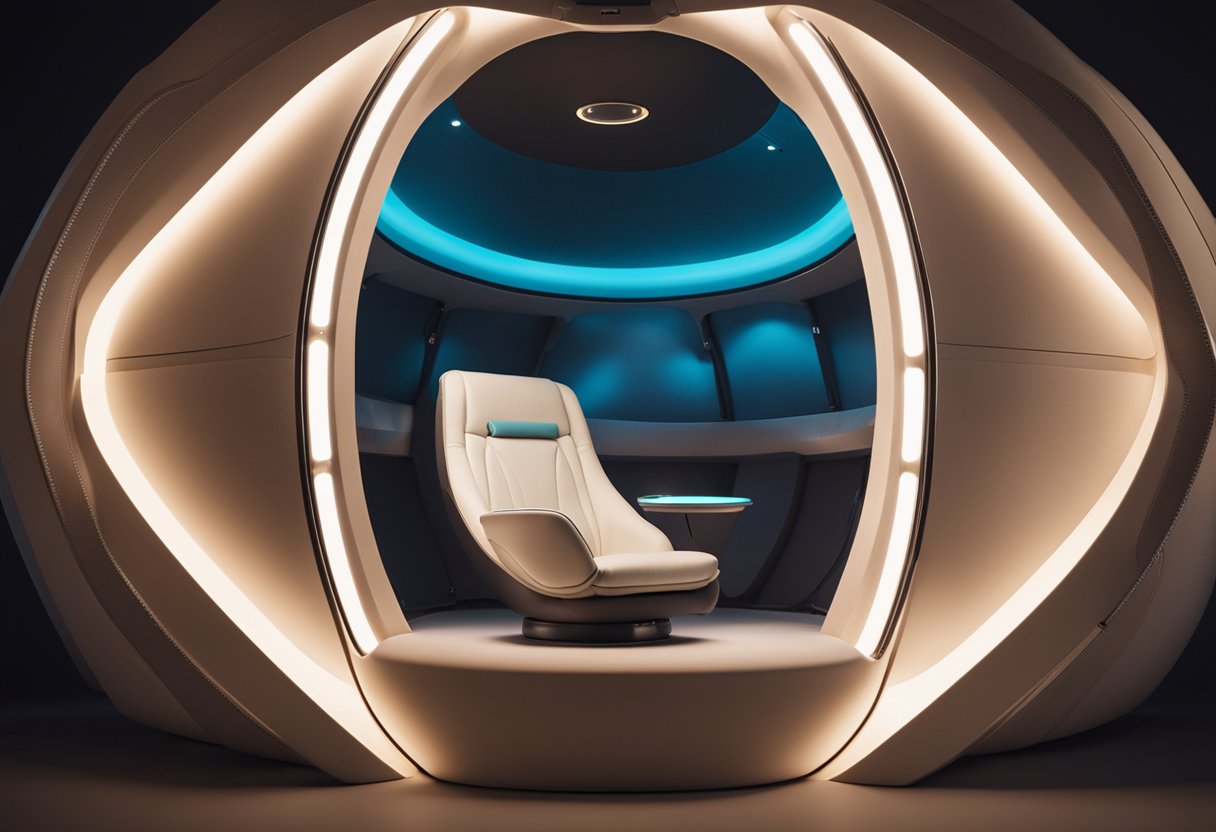
When we consider the comfort of astronauts in space capsules, every aspect from ergonomic designs to advanced materials plays a pivotal role. We focus on creating environments that are not only habitable but also conducive to the wellbeing of space travellers.
We utilise cutting-edge materials and design approaches to enhance the comfort and livability within the confined space of capsules. Ergonomics is central to our design philosophy; by tailoring the space to the human body, we minimise physical strain and maximise headroom and freedom of movement.
Our selection of materials is critical. We incorporate flexible, durable fabrics alongside surfaces that are soft to the touch but can withstand the rigours of space travel. Innovations in thermal control system technology allow us to maintain a stable internal pressure and temperature, ensuring a comfortable environment despite the harsh surroundings of outer space.
Advancements led by design specialists focus on the refinement of living quarters, considering every square inch of volume for optimal utility without compromising on comfort. The ergonomic design extends to all aspects of the capsule’s interior, from sleeping quarters to control panels, ensuring that the challenges of microgravity do not impede the astronaut’s ability to operate effectively and live comfortably.
By integrating these philosophies, we at SpaceVoyageVentures.com are committed to developing space capsules that redefine comfort in the new frontier of space tourism.
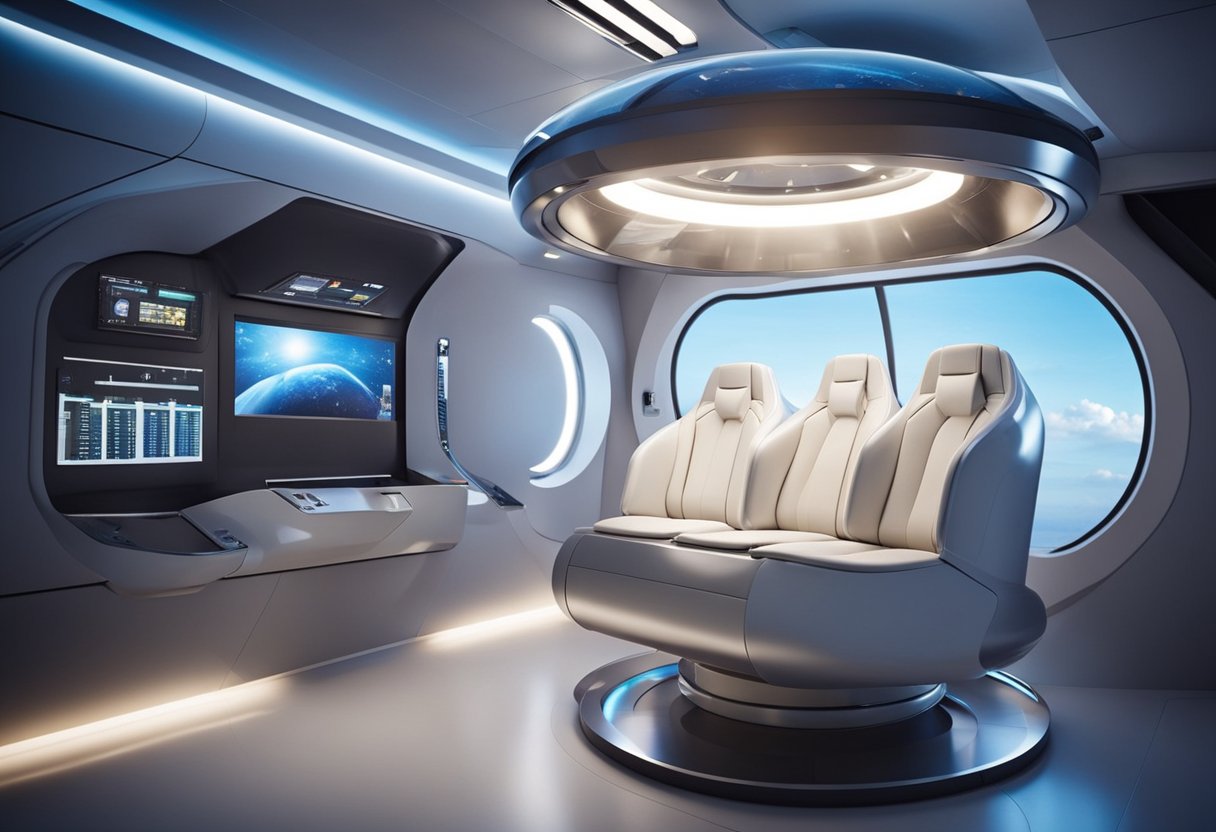
In recent developments, we’ve seen remarkable strides in space capsule technology, leading to notable advancements in automation, communication, and onboard electronics. These improvements are essential to enhancing the safety and comfort of astronauts as well as paving the way for the burgeoning field of space tourism.
Automation technology within space capsules has progressed significantly. We now employ sophisticated algorithms that control flight parameters, reducing the workload on astronauts. This advancement not just bolsters safety but also lends to the efficiency of the spacecraft. For instance, thrusters and navigation systems are now capable of self-correction, leading to more precise manoeuvres with less human intervention.
The communication systems aboard space capsules have been revolutionised to ensure that there is uninterrupted and secure contact with ground control. The introduction of laser communication technology allows for high-bandwidth data transfers, meaning that voice, video, and telemetry data are relayed with minimal latency. These communications advancements are imperative, not only for mission success but also for the morale of the crew, as staying connected to Earth is vital for long-duration missions.
On-board electronics have seen a complete transformation, leveraging miniaturisation and efficiency. Capsules are now equipped with state-of-the-art computers that are both powerful and resilient to the harsh conditions of space. These computers process vast amounts of data, manage life support systems, and provide crucial diagnostic information. Such technological improvements are instrumental as we edge closer to sending tourists into space, where reliability and user-friendly interfaces will be key for a successful experience offered by ventures like SpaceVoyageVentures.com.
In the realm of spacecraft design, the development and incorporation of robust safety mechanisms are paramount. We focus on two critical areas: ensuring capsule integrity and detailing emergency procedures that safeguard astronauts during their voyage.
The capsule’s heat shield is a fundamental component designed to withstand extreme temperatures during re-entry into Earth’s atmosphere. Innovations in materials and design have led to the development of heat shields capable of protecting the capsule from overheating, which could lead to structural compromise. For instance, an optimised spacecraft landing capsule design ensures a manageable deceleration and minimises the risk of burnout, even at the 50 km height where overheating is most critical.
In the event of a launch anomaly or in-flight emergency, a well-designed abort system is critical. This system, typically a set of solid rocket boosters, is engineered to quickly propel the capsule away from the hazard, ensuring the safety of the crew. Such abort systems have been rigorously tested and are an integral part of safety protocols seen in modern spacecraft designs, as briefly touched upon in articles examining NASA’s safety enhancements. We ensure that these systems are not only reliable but also easily activated in the exigent circumstance that necessitates an abort.
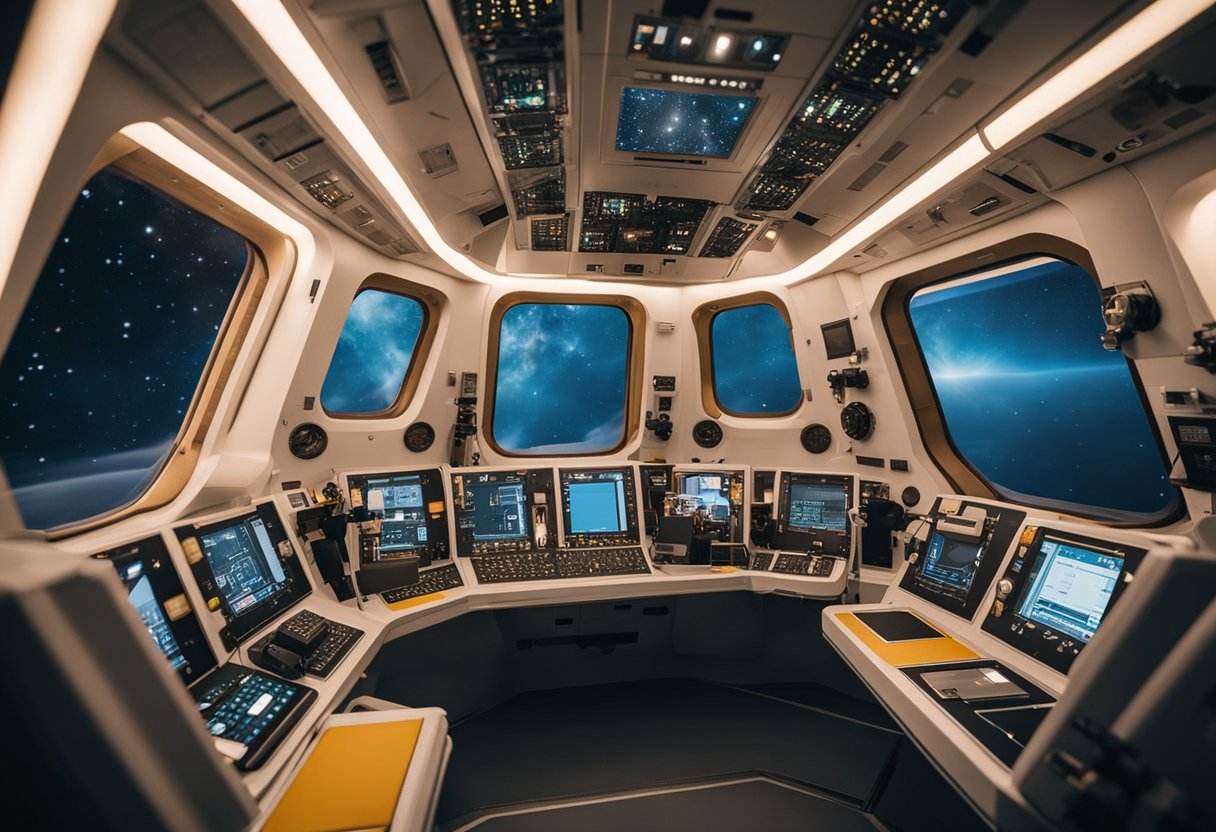
In ensuring the comfort of astronauts, our environmental controls are meticulously designed to manage thermal regulation and maintain optimal pressurisation and oxygen levels within the space capsule.
Our climate-controlled systems feature advanced thermal protection, crucial for shielding astronauts from the extreme temperatures encountered in space. These systems are finely tuned to operate effectively, whether in direct sunlight or the depths of cold space. Using a combination of insulation and heat exchange mechanisms, we maintain a consistent, comfortable temperature within the living quarters.
To replicate Earth’s atmosphere, the pressurisation systems operate to sustain a stable pressure within the capsule. This is essential not only for comfort but also for the safety of crew members, particularly when transitioning from the ocean’s depth to the vacuum of space.
Oxygen levels are carefully managed through systems that both remove carbon dioxide and generate oxygen from water. These life support systems ensure ample oxygen supply for breathing.
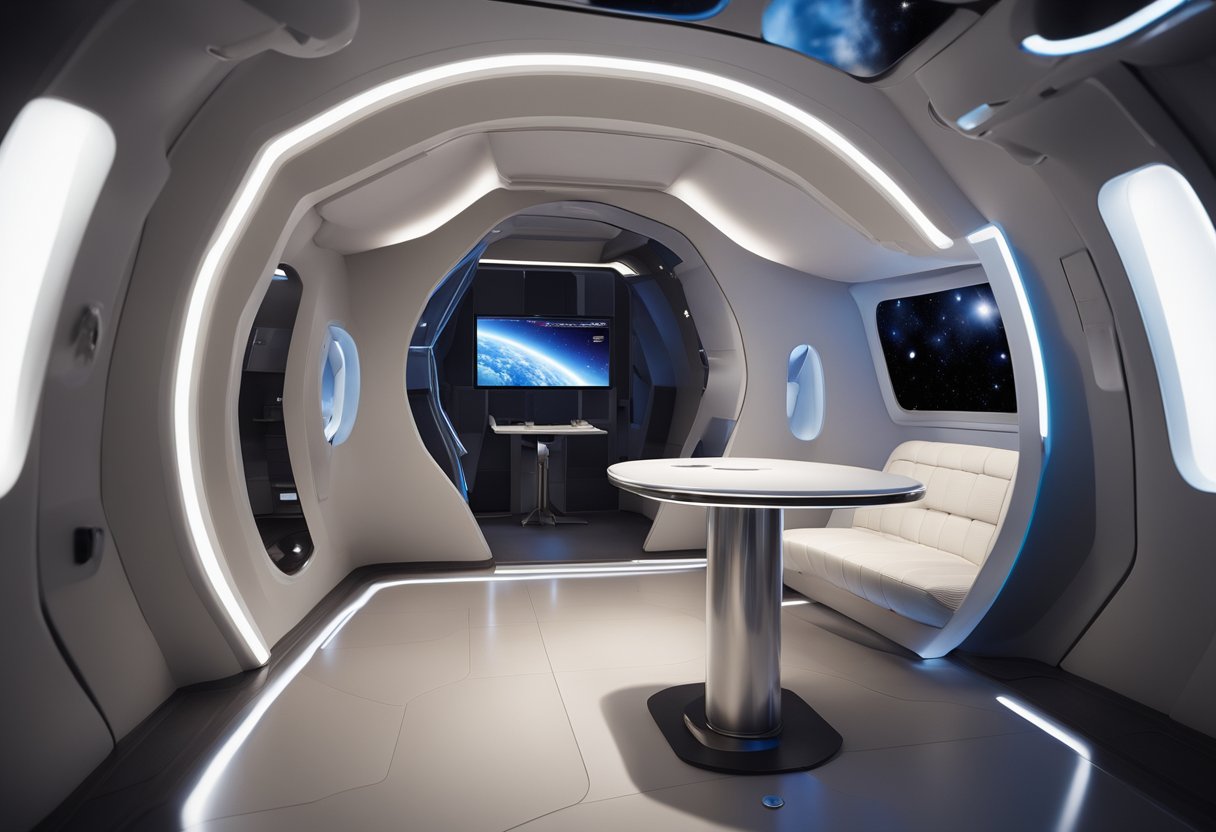
In our pursuit of advancing space travel, we’ve made significant improvements to the structural design of space capsules. Focusing on the critical aspects of aerodynamics and heat management, as well as the integrity of the hull and window construction, has resulted in capsules that are both safer and more comfortable for passengers.
The design of spacecraft must balance aerodynamic efficiency with effective heat management to ensure both safe re-entry and optimal performance in the vacuum of space. Our capsules feature a streamlined shape, contributing to a reduction in atmospheric drag. The spacecraft’s heat shield is engineered with ablative materials that absorb and dissipate heat upon re-entry, protecting both the capsule and its occupants.
Our recent innovations include a specially designed splash cone around the base, which not only assists with heat management but also helps to stabilise the capsule during ocean landings. The aerodynamics and heat management systems are intrinsically linked to ensure that every journey through Earth’s atmosphere is as smooth and safe as possible.
We turn our attention to the physical robustness of the capsule by examining the hull and window construction. Our capsules implement a pressure-resistant hull crafted from advanced materials capable of withstanding the harsh environment of space and the intense pressure of re-entry.
Windows in our capsules are constructed using multiple layers of durable, transparent materials, ensuring a clear view for passengers while maintaining the overall integrity of the spacecraft. These windows are strategically placed and shaped to maximise the viewing experience without sacrificing safety or structural integrity.
Through careful design and material selection, we ensure that the hull provides not only safety and durability but also contributes to the overall efficiency of the spacecraft. Our structural enhancements not only boost performance but also promise a new era of comfort for space voyagers, symbolising a leap forward in space tourism as documented by SpaceVoyageVentures.com.
As we explore modern space travel, it’s critical to understand the pivotal roles of safe launch and re-entry operations, which have seen substantial advancement in mitigating risks associated with extreme g-forces and intense heat.
During the launch, the acceleration subjects astronauts to severe g-forces that can compress tissues and challenge the body’s capacity to maintain normal functions. Spacecraft are designed with contoured seats that recline to distribute these forces more evenly across the astronauts’ bodies. We use advanced materials and engineering to ensure that these seats provide both comfort and safety. For instance, the inclusion of memory foam and customised padding reduces the strain on the body.
The aspect of re-entry heat dissipation entails managing the high temperatures generated as the spacecraft encounters Earth’s atmosphere. We have seen a transformation in heat shield technology with the development of new materials capable of withstanding temperatures hot enough to melt steel. The capsule’s thermal protection system is a marvel of engineering; it employs a blunt-body design that deflects and dissipates heat, ensuring the internal cabin remains at a safe temperature. This is achieved through ablative materials that absorb heat and then erode away, taking the heat with them.
Through meticulous design and testing, we ensure that the critical processes of launch and re-entry are conducted with the utmost precision to maintain astronaut safety and spacecraft integrity.
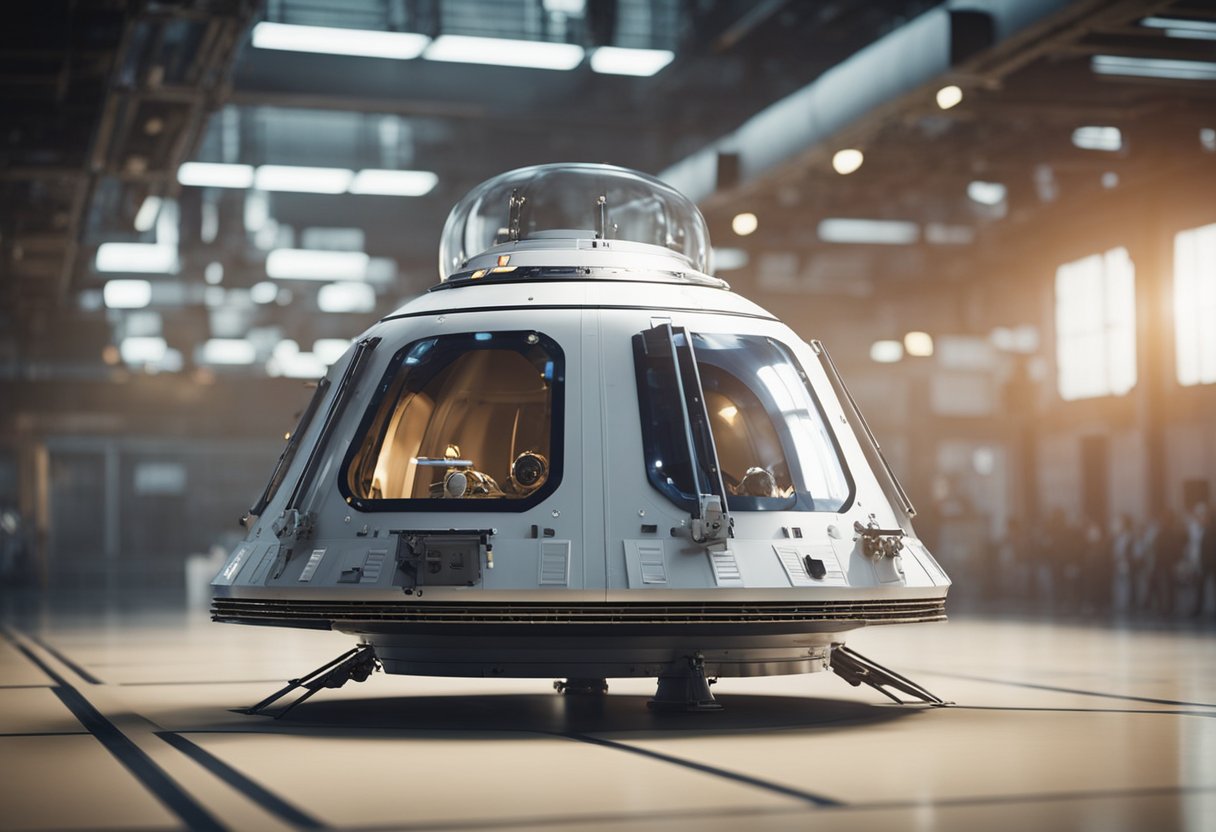
As we examine the advancements in space travel, we turn our focus to the critical components that ensure the safety and integrity of astronauts and payloads upon re-entry and landing. In this section, we’ll explore the vital systems used in the final stages of space missions: parachute deployment and ocean landing strategies.
Parachute systems remain a cornerstone for the safe return of space capsules to Earth. Once a capsule re-enters the Earth’s atmosphere, a sequence of parachutes is deployed to reduce the landing speed to safe levels. It begins with drogue chutes, which are ejected to stabilise and slow the descent, followed by the main parachute array which further decreases the velocity. This multi-stage process is critical for a controlled and survivable landing.
In recent missions, technological upgrades to parachute materials and design have enhanced their reliability. For instance, our team carefully selects stronger, heat-resistant fabrics capable of withstanding the intense friction and heat during atmospheric entry. Moreover, we consistently improve control mechanisms to refine the timing and coordination of the deployment sequence, ensuring peak performance when it matters most.
For ocean landings, space agencies and private space travel firms, like those highlighted on SpaceVoyageVentures.com, implement diverse strategies to ensure capsules are retrieved swiftly and securely. The traditional approach involves a splash cone, an apparatus attached at the base of the capsule that defuses the impact with the water, safeguarding the structural integrity of the vessel and its occupants.
We utilise specially equipped recovery vessels ready to locate and retrieve the capsule from the ocean as soon as possible after splashdown. To streamline this process, our teams work on precise landing predictions, enabling recovery fleets to be positioned effectively. Once the capsule is secured, we employ cranes and rigging systems to hoist it aboard and begin the post-mission procedures.
These landing and recovery advances, coupled with constant innovation, provide us with the confidence that we meet the rigorous standards of space mission success and astronaut safety.
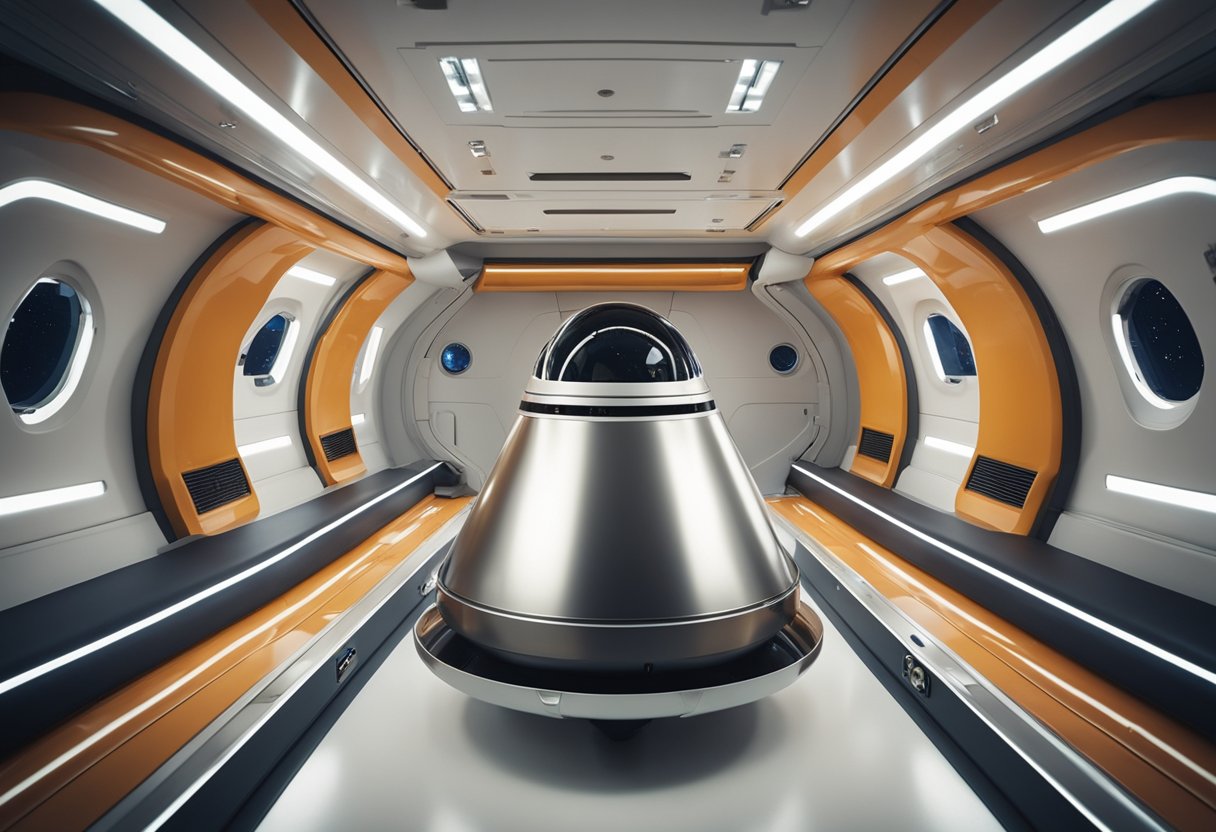
In our analysis of the latest advancements in space travel, we recognise that the enhancement of vehicle performance is closely tied to the design and engineering of the space capsules themselves.
The mass of the space capsule is a critical factor in both its velocity and the efficiency of reaching supersonic speeds. We have observed that as the mass increases, the energy required for lift-off and propulsion skyrockets. Our focus has been on reducing this mass to optimise the fuel-to-weight ratio, ensuring that our space capsules can reach the necessary speeds for orbital insertion without unnecessary energy expenditure.
The speed of the vehicle, particularly during the critical phase of re-entry, is where our design work pays dividends. We have tested our crew modules to withstand supersonic speeds, ensuring a stable descent trajectory and maintaining structural integrity for the safety and comfort of astronauts and space tourists. Capsules must be robust to endure the substantial forces experienced when entering back into the Earth’s atmosphere at high velocities.
Through meticulous engineering, we ensure that the performance of our space capsules meets the stringent requirements necessary for space exploration and tourism. We are currently documenting potential future journeys and experiences available for the intrepid space tourist at SpaceVoyageVentures.com, where we are preparing for a new era of space exploration.
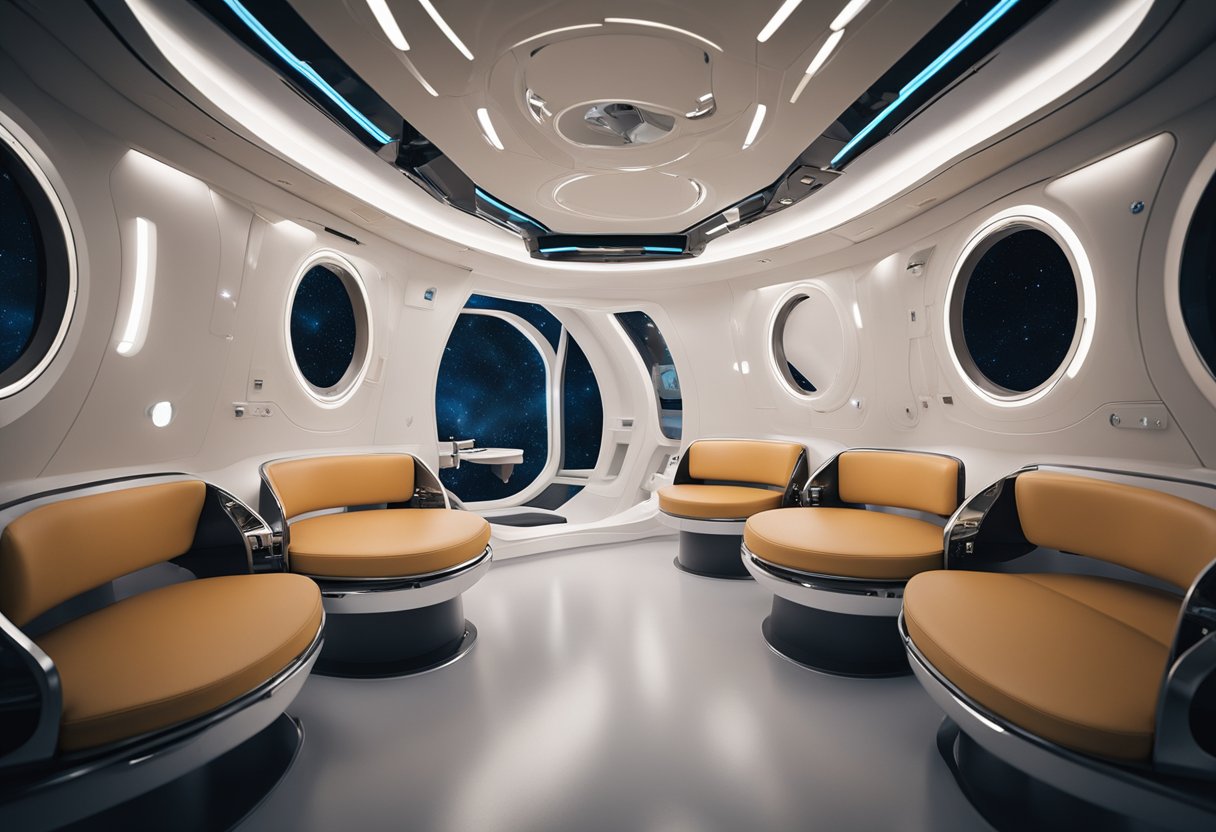
In the realm of space travel, we’re witnessing a transformative era as comfort within space capsules has seen considerable advancements. This evolution is crucial to support the growing ambition of lunar and interplanetary missions.
As we venture beyond low Earth orbit, missions to the moon and Mars have necessitated significant improvements in capsule design and onboard facilities. The International Space Station (ISS) has served as an invaluable testbed for long-duration human spaceflight. It has informed the design of spacecraft intended to transport us to other celestial bodies.
Lunar missions are no longer a matter of short visits, but now aim for sustained presence and habitation. Details such as Space Perspective’s capsule design reveal a shift towards not just functionality but also comfort, catering to the needs of space tourists and explorers alike. Optimising space use within capsules has led to better ergonomics and more livable environments.
Mars missions present even greater challenges considering the extended time astronauts must spend in transit. Ergo, the dimension of comfort has escalated from luxury to necessity. With revolutionary spacecraft like Boeing’s new deep-space capsule, we’re preparing to send larger crews and more equipment, enabling them to live and work in space for months on end.
For those of us here on Earth fantasising about one day embarking on our own space adventure, websites like SpaceVoyageVentures.com provide an early glimpse into what the future holds for space tourism. Like a brochure for the sky, it outlines current, forthcoming, and speculative journeys beyond Earth’s stratosphere—ushering in an era where space travel intertwines with leisure.

In the realm of space travel, operational elements have undergone substantial enhancements to ensure the astronaut crew’s comfort and efficiency. These adjustments also contribute to the endurance of the vehicle and service module over lengthy missions.
We appreciate that extensive training is crucial for astronauts, not just for mission success but also for adapting to the confined quarters of modern space capsules. Up-to-date simulators and advanced virtual reality systems are utilised to acquaint crews with the vehicle’s latest layouts and systems, enhancing their spatial awareness and operational proficiency.
Astronauts are provided with ongoing psychological support to help them cope with the challenges of prolonged mission durations, addressing both mental well-being and physical comfort. This ensures that they remain focused and effective throughout their time in space.
Vehicle maintenance is now streamlined due to modular designs and advanced diagnostics systems. Spacecraft components are engineered for easier access and replacement, minimising the time required for servicing the vehicle or service module.
Listed below are the key innovations in maintenance procedures:
Investing in these operational aspects underpins not just the reliability of spaceflight, but the overall experience for the crew. We’re also seeing a tangible interest in space tourism through platforms like SpaceVoyageVentures.com, where potential future journeys are explored, setting a new benchmark in both operational standards and public engagement.
As we advance, the prospects of space tourism and commercial spaceflights are becoming increasingly tangible, with companies like SpaceX and Space Perspective leading the way.
The domain of space travel is on the brink of a revolutionary transformation, particularly with the burgeoning facet of space tourism. Companies such as SpaceX and Space Perspective are devising capsules designed to sustain and afford comfort to commercial passengers. The Spaceship Neptune, a balloon-borne capsule developed by Space Perspective, plans to offer tourists a serene cruise to the edge of space.
SpaceX, being a stalwart in the field, plays a significant role in this narrative by enhancing the viability of sustained commercial flights. Their endeavours coalesce with NASA’s initiatives, underscoring a symbiotic relationship pivotal to the expansion of this sector.
We find that our chronicle is enriched by the advent of platforms like SpaceVoyageVentures.com which are at the forefront of documenting available and forthcoming space tourism trips. Their contributions to the dissemination of knowledge regarding these nascent ventures are inestimable – forging an accessible path for the public to witness and potentially partake in space travel.
As these sectors mature, we anticipate a confluence of technology, demand, and enterprise that could create a new paradigm for human experience – one where the cosmos becomes as traversable as the skies we routinely navigate today.
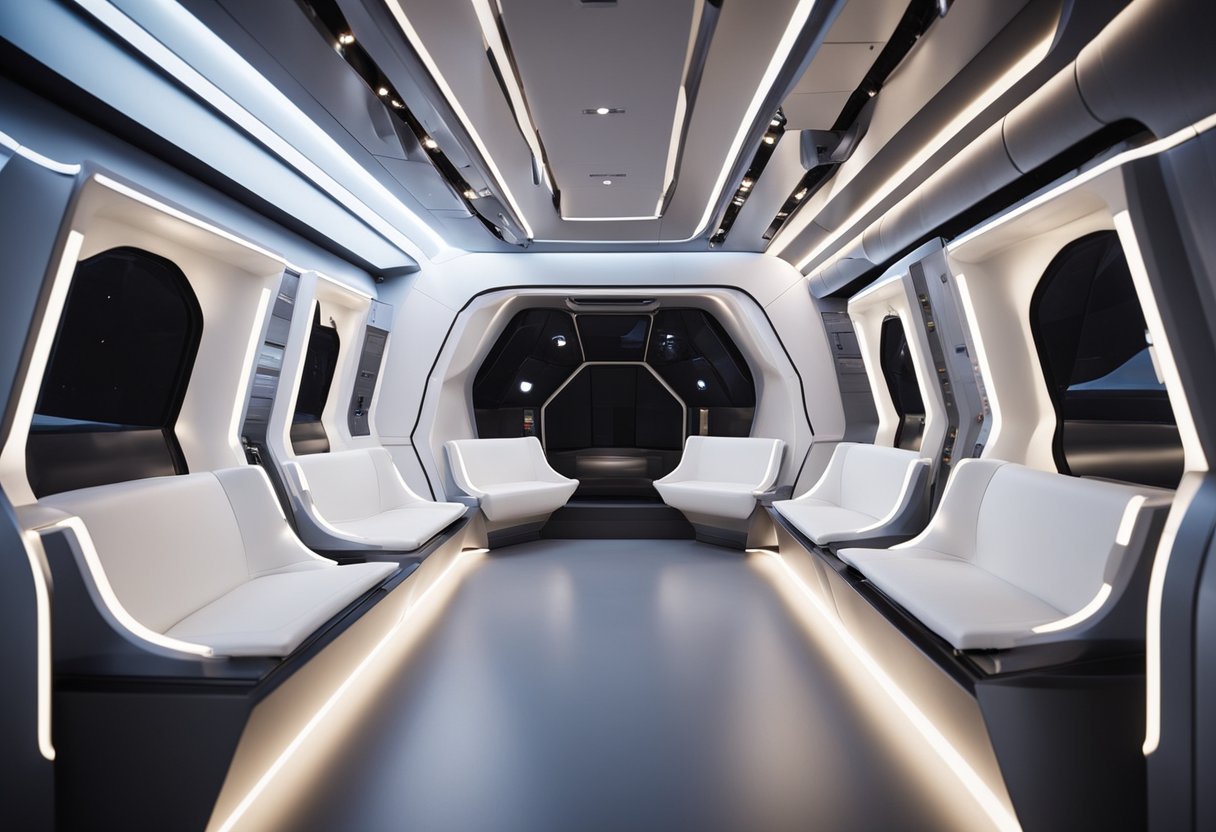
In recognition of the curiosity surrounding astronaut life and the innovative strides in space travel, we address some pressing questions regarding the recent enhancements in space capsule comfort.
We’ve observed significant improvements in space capsule ergonomic design, allowing for greater freedom of movement and restful sleep. Innovations include better-contoured seating, adjustable lighting, and temperature control systems that contribute to a more pleasant environment during spaceflight.
Astronauts utilise no-rinse body wipes and rinseless shampoo caps for personal hygiene, conserving water and reducing the need for traditional bathing facilities. They also rely on specialised airflow systems to whisk away debris and moisture from the body.
For prolonged missions, space capsules are equipped with sleeping bags attached to walls, noise-cancelling headphone technology, and personal touchscreens for entertainment and communication, which support both physical comfort and mental well-being.
Spacecraft toilets have been overhauled to include advanced urine recycling systems that convert waste into water and more effective solid waste containment, reducing odour and improving hygiene within the capsules.
To maintain mental well-being, astronauts engage in regular communication with loved ones, participate in leisure activities, such as watching films or reading books, and follow a structured routine that includes physical exercise and work.
Astronauts may bring small personal effects—such as family photos, favourite books, or even musical instruments—which help to create a sense of homeliness and emotional support on their extraordinary journey.